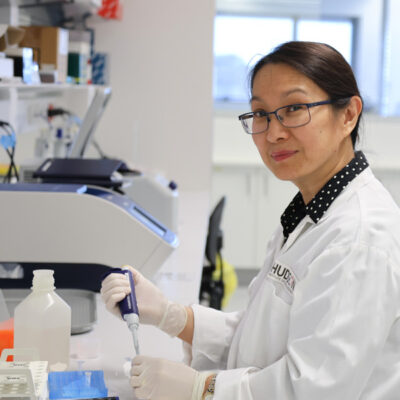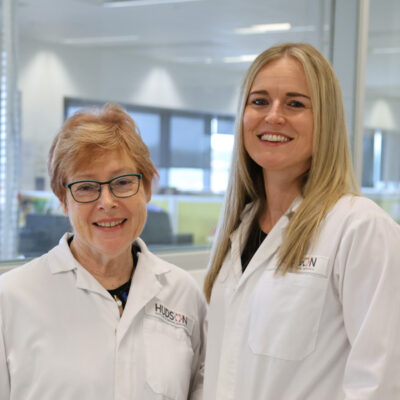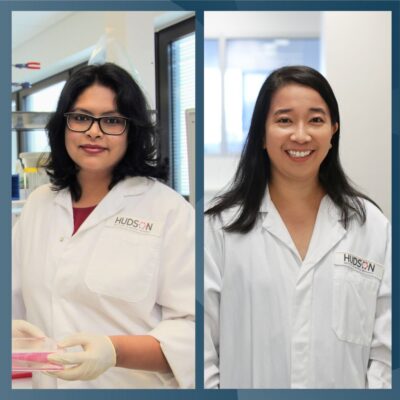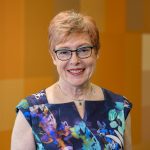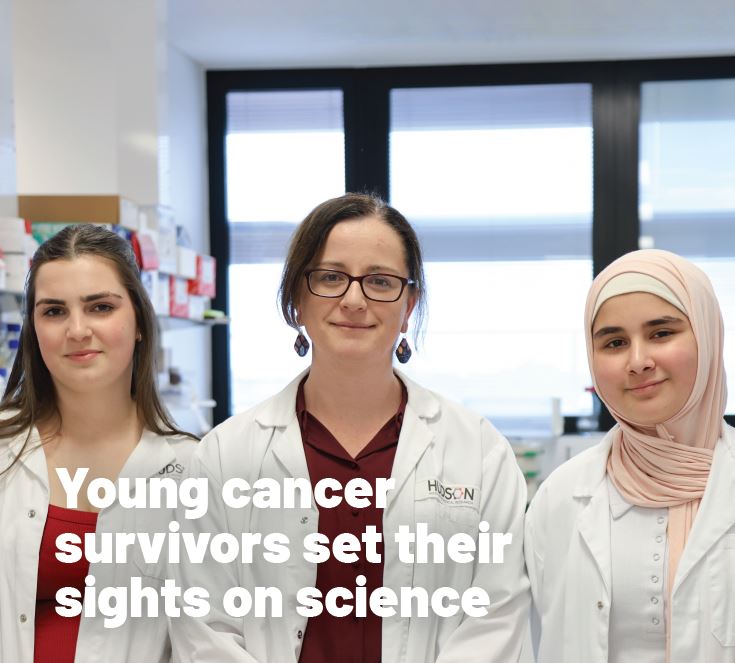Nicole’s story: from undiagnosed pain to endometriosis
By Hudson Institute communications
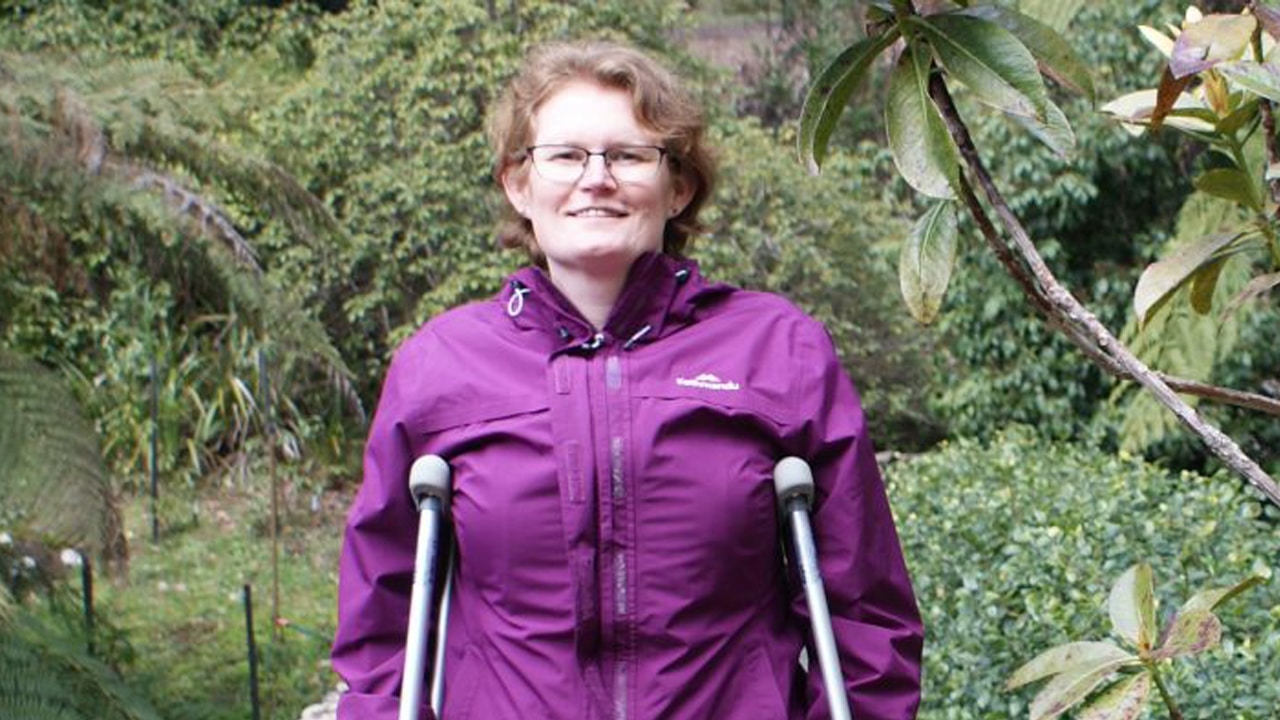
Nicole Fernley battled with endometriosis symptoms for 20 years before receiving a diagnosis. This is her story.
In 2010, aged 33, my surgeon told me that he had found and removed endometriosis.
I cried tears of joy, relief, anger and frustration that it took me 20 years to get an endometriosis diagnosis, a common gynaecological disease that affects one in nine women.
I’d never heard of endometriosis before meeting this gynaecologist. Yet considering my history and the list of symptoms on the leaflet in front of me, I wish I had known about these symptoms as a 13-year-old. I was a classic endometriosis patient – I had every symptom. I left hospital struggling to comprehend how this could have happened when I had been self-advocating and telling doctors that something was wrong with my menstruation. Yet in that time this one word was never mentioned. My story is not uncommon.
Early endometriosis warning signs
I had a dramatic first period aged 13 with pain so excruciating I had a seizure and fainted. My periods were extremely heavy with cramping that felt like contractions.
When I was 15, I hopped off the school bus, and it felt like my ovary exploded. I quickly sought help from my local doctor, but my father who had recently returned from Geraldton picked me up, turned around, and drove us back to Geraldton where I had emergency surgery. This revealed a cyst the size of a small rockmelon had indeed burst. I was lucky to have kept my ovary.
At 17 and after bleeding heavily for 10 days straight, I collapsed. My cycle was now a 10-day period with about a week in between. I was exhausted. I was put on a drip and the contraceptive pill. This helped, but my periods on the sugar pill were still very heavy and eventually I started to breakthrough bleed. This pattern continued for years, trying a variety of pills.
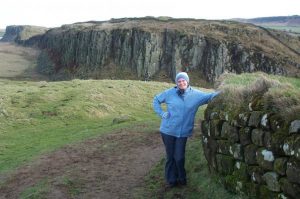
Seeking the right help for endometriosis diagnosis
I had a bad experience while living in England. My ‘about to retire’ male doctor told me it was all psychosomatic and that I had been bringing it upon myself. He slammed the door as he left the room, leaving me lying half naked on the examination table. I had a Bartholin Cyst, diarrhoea and vomiting, had lost 10 kilograms and was extremely dehydrated. My anxiety for my health went through the roof after this doctor failed to listen. That was the moment I decided to return to Australia.
Finding a middle ground
As a female complaining I was seen as either too calm and rational to be in that sort of pain, or seen as too irrational and hysterical. There was no middle ground for me to express my symptoms or communicate my pain levels in a way that was understood and validated.
Filling in the endometriosis puzzle
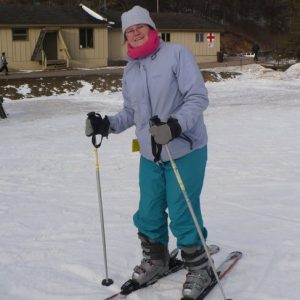
When I arrived home, I got the full service done. A gastroscopy and colonoscopy discovered a serious yeast infection throughout my oesophagus and entire system – an allergic reaction to the antibiotics I had been prescribed. The diagnoses kept coming – dust mite allergy, fructose and lactose intolerances, and polycystic ovaries. Endometriosis wasn’t diagnosed.
Five years later, in 2010, I still had pelvic pain and things didn’t feel right. My doctor and I decided I would stop taking the contraceptive pill and do some hormonal testing. I travelled to America for a holiday where my periods were terrible and debilitating. When pain coursed through my body with spasms that took my breath away, I contemplated calling 911. But with a friend in hospital battling Leukaemia, I felt I should just toughen up. So I went skiing for the first time the next day. As I flew down the slope I vowed to see a gynaecologist when I got home and get thoroughly checked out.
The gynaecologist who changed my life
Back in Australia, I was very nervous as I walked into a new gynaecologist’s office, but his caring and sensitive nature made me feel immediately relaxed. This doctor changed my life. He was fairly certain I had endometriosis and the only way to know would be a laparoscopy. I finally got my answer after my operation. I also joined the Epworth Freemasons Endometriosis Support Group shortly after, and have been an active member ever since.
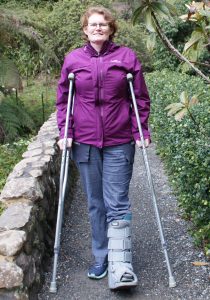
The impact of an endometriosis diagnosis on my life
My endometriosis diagnosis was the starting point to access support and attempt to understand what was and is still going on in my body. I am now 43.
It’s been 10 years since my endometriosis diagnosis and I still am never prepared for the unpredictability of this disease. In May 2018, after a particularly long and heavy period, I fainted and fell, breaking five bones in my foot. Multiple operations, pins, plates and screws later I have a deep reminder of the personal impact endometriosis has had on my life.
Helping others with endometriosis
I am passionate about supporting others with endometriosis. I’ve listened to women in our support group talk about their own experiences.
In the aftermath of my injury I completed my Masters in Health Sciences (Rehabilitation Counselling). As part of the La Trobe University course we had a year-long research project culminating in an article for potential journal publication. I decided I would collate the collective experience of women and their online endometriosis diagnosis stories to see what common themes I could find. At first it was just a little project which I thought would just end with my final assessment. But these 49 women’s stories drew me in. My commitment to actually publish my research findings became stronger, especially for the many other undiagnosed women out there. My research article That One Doctor… was published in 2021 in the Journal of Endometriosis and Pelvic Pain Disorders.
Many accounts of women in the paper I published revealed traumatic experiences of suffering and loss. However, I also saw beautiful themes of personal strength, resilience, shared optimism and hope, which came as a surprise.
I found a golden theme within the women’s words.
Ultimately, it only takes one doctor to make the diagnosis of endometriosis a reality and provide ongoing support. My wish for all patients is that they find their one doctor who listens, believes and compassionately supports you in your medical treatment.
How am I post-diagnosis?
Currently I have an Implanon (contraceptive implant) inserted in my left arm which has been wonderful and my symptoms have been minimal. I wish I had done it sooner. I had one period just after it was inserted that I would describe as ‘normal’ for the first time ever in my life. Eighteen months later, I haven’t had a period since and all seems well.
Reach out for help
For those suffering silently, don’t suffer alone. Become aware of endometriosis symptoms, get medical advice and seek help from a support group. The first step to a coordinated diagnosis is the recognition that symptoms exist and that ongoing pelvic pain is not normal. Speak up and be open to disclosing your symptoms to your doctor.
Doctors, please be that one doctor.
This is my story. I want you to keep talking about endometriosis, you never know when you might be that one person for someone else. It is my hope that my research and the work here at Hudson Institute creates the momentum for change.
Endometriosis is a life-long disease
Endometriosis is a life-long disease requiring support and treatment across the lifespan. The best advice I can give to anyone suffering with endometriosis is to seek support. Joining the Epworth’s Endometriosis Support Group surrounded me with a community of women who understood what living with endometriosis is really like and whom I have laughed and cried with over the years. I’m not sure what endometriosis will throw at me next but if I have my circle of support there, I’ll manage.
Research matters. Research at Hudson Institute brings hope to women living with this disease that there will be new ways to diagnose, treat and manage this invisible illness.
About the photographs
The photographs in this story remind me that endometriosis is an invisible illness. In these photographs I am in pain, but you’d never know because I am smiling. Sometimes we mask our pain. It’s time we talked.
In this article
- Early endometriosis warning signs
- Seeking the right help for endometriosis diagnosis
- Finding a middle ground
- Filling in the endometriosis puzzle
- The gynaecologist who changed my life
- The impact of an endometriosis diagnosis on my life
- Helping others with endometriosis
- How am I post-diagnosis?
- Reach out for help
- Endometriosis is a life-long disease
About Hudson Institute
Hudson Institute’ s research programs deliver in three areas of medical need – inflammation, cancer, women’s and newborn health. More
Hudson News
Get the inside view on discoveries and patient stories
“Thank you Hudson Institute researchers. Your work brings such hope to all women with ovarian cancer knowing that potentially women in the future won't have to go through what we have!”

